Sharks of the Mediterranean: to be afraid or not?
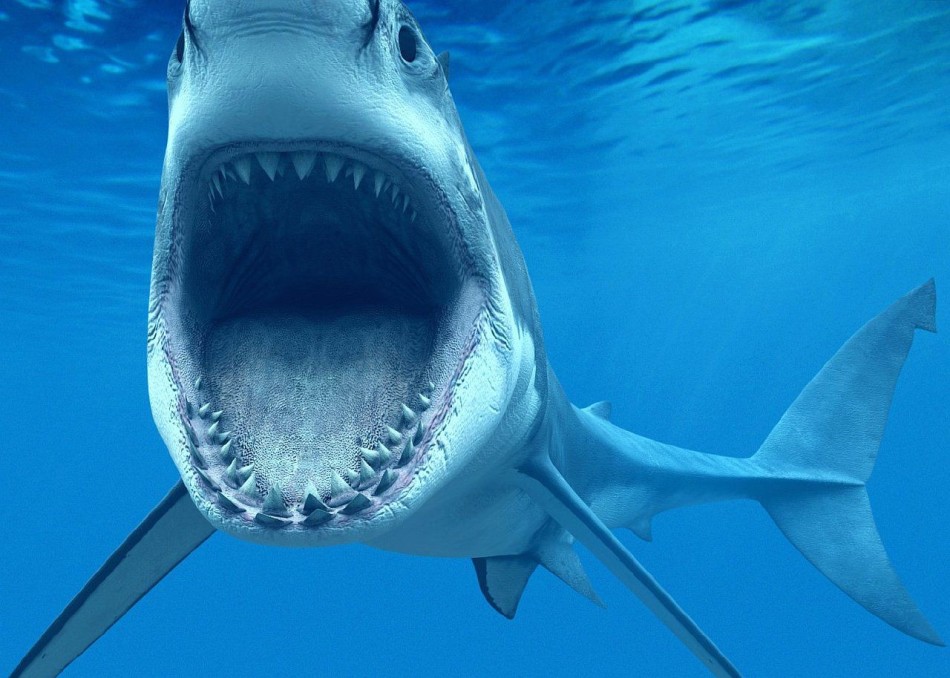

There are 47 species of sharks in the Mediterranean Sea; 15 of them are considered dangerous to humans*. For sharks, comfortable living conditions have developed here: water excellent in salinity, purity and temperature, the availability of food.
Considering that every year Greece with its 15,000 km of coastline (including numerous islands) is visited by millions of tourists from all over the world, it is clear that meetings of people with sharks are not uncommon there. Like any other Mediterranean country Greece has a decent income from a beach holiday; therefore, it does not advertise the danger of encountering these predators. However, this danger is very conditional. In the Mediterranean basin, despite the great diversity and number of sharks, there are very few cases of attacks on people, an order of magnitude less in comparison with other “shark-dangerous” regions of the planet, such as the USA or Australia.
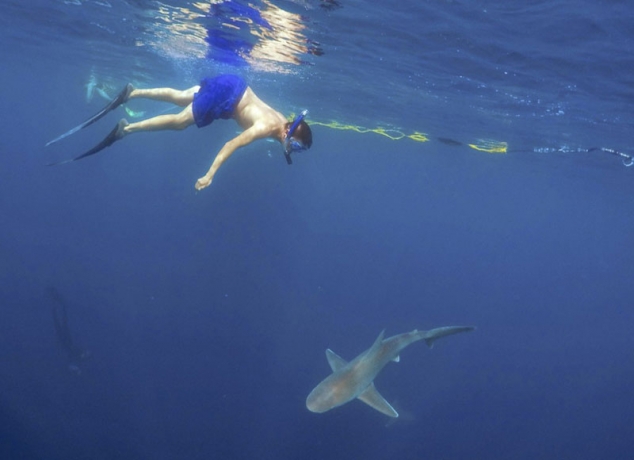
In general, sharks are nocturnal predators, so if you are not a fan of night solo dives or long-distance swims, then sharks in Greece can definitely not be afraid. Danger is possible only at a distance from the coast: at a depth there are white sharks, blue sharks, mako sharks, which can attack divers, spear-fishers, swimmers. In the coastal zone, there are no habitats for a large number of fish, so it is not attractive for dangerous predators.
On the island of Crete, fears about these toothy sea creatures are mainly caused by appearance of blue sharks near the beaches. Tourists and local residents have noticed quite a lot of small-sized predators swimming in coastal waters.
In recent years, blue sharks have become more active. This is due to the fact that one of the largest breeding locations for these sharks is in the Mediterranean Sea. Few predators live in the Aegean Sea, so juveniles feel good here and occasionally disturb bathers with their appearance near the coast of Crete and other Greek islands. At the same time, sharks off the coast of Crete do not pose a threat to vacationers on the beaches. By and large, you can meet sharks here only in the aquarium. The pride of Greece, the Cretan Aquarium (CRETAquarium), is located in Gouves, not far from the capital of Crete Heraklion.
What does the statistics say? The Global Shark Attack File (GSAF: sharkattackdata.com/place/greece) says that over more than 170 years, 27 cases of shark attacks on people were recorded off the coast of Greece, including 15 fatalities. The first case refers to 1847, the last—to 2014. It is important to note that eight cases of attacks were provoked by people themselves. The observation table ends in 2020.
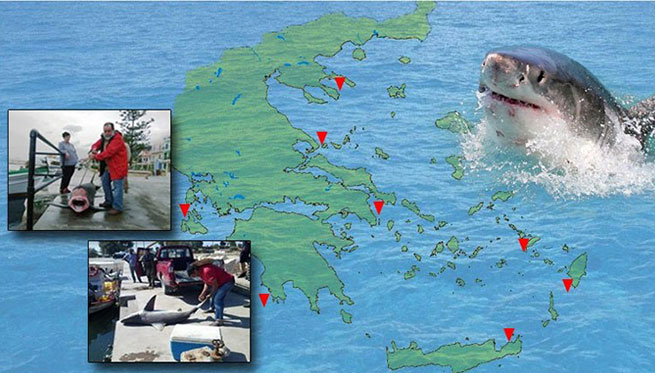
When analyzing fatal shark attacks on people in the Mediterranean region, it is noted that the victims were not eaten by predators but died from blood loss. It is believed that a person could be mistaken for a fur seal or other mammal. Therefore, after the first bites, the shark identifies its prey and gets away from the person.
In fact, the danger posed by humans to sharks is hundreds of times greater than their danger to us. At the beginning of the article, 47 species of sharks were mentioned in the Mediterranean Sea. Probably 46 remained: the hammerhead shark was last seen in 1995. Since then, no meeting with it has been documented. Scientists believe that another seven species of sharks living here are on the verge of extinction.
In the last three decades, there has been a catastrophic decrease (by more than 80%) in the population of these predators. This is due not only to poor ecology but also to uncontrolled fishing. A huge number of them are caught in the sea by accident: most fall into nets intended for tuna and swordfish. Nevertheless, in recent years there has been an increase in direct hunting, including illegal hunting, due to an increase in demand for shark fins, which are very valuable in cooking.
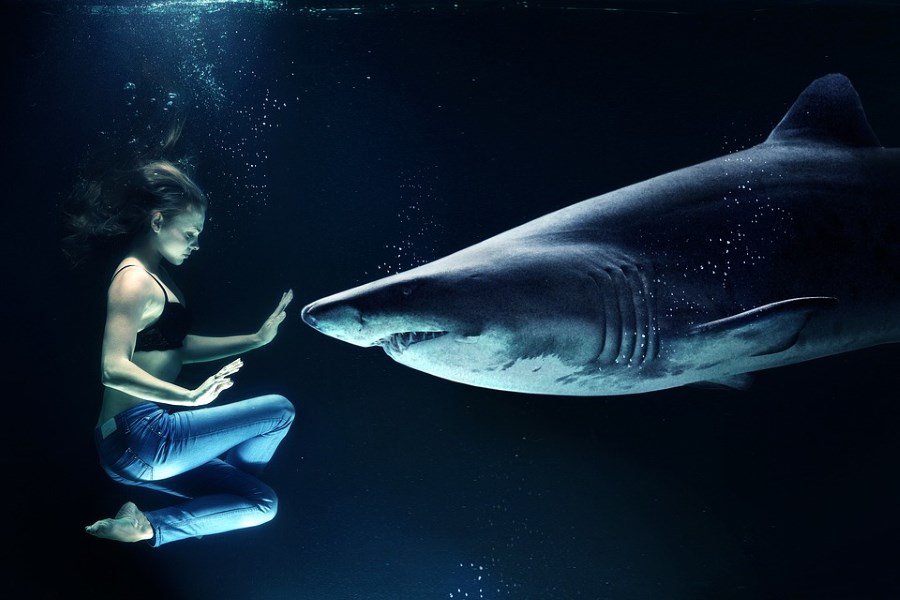
There are also commercial species of sharks. So, according to Greek laws, it is allowed to catch the blue shark, and only it. True, cunning fishermen call any toothy prey “galeos” (translated it means shark) and calmly sell: in the port markets, “shark meat” sells like hot cakes. If you are offered shark fin soup in a Greek tavern, then do not refuse and try it.
The existence of sharks is threatened. The younger generation grows slowly. Late puberty and a small number of offspring makes the process of population recovery slow. The decline in the number of sharks in the Mediterranean could be a disaster for other marine life. Sharks regulate the number of other predators, eat weak and sick animals, thereby maintaining the purity of populations of various marine species. The destruction of sharks that close the food chain will inevitably lead to a violation of the biological balance and catastrophic consequences in the Mediterranean ecosystem.
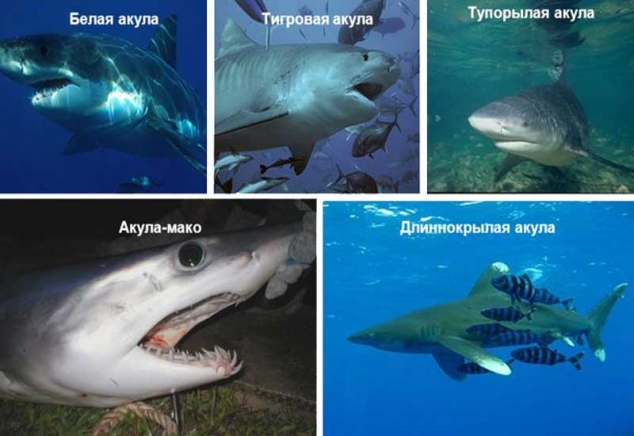
*The media, as a rule, distinguishes several types of the most dangerous sharks living in the Mediterranean Sea.
The great white shark, also known as the cannibal, is one of the largest predators, growing up to 5 meters long.
The tiger shark, the length of which reaches 6 m and the weight is almost a ton, is widely widespread.
Sandy (or Eastern European) sharks often gather in a flock.
Very aggressive and omnivorous gray bull shark, which is considered the culprit of most deaths as a result of attacks on people. The length of females is up to 4 m, and its weight exceeds 300 kg.
Rarely approaching the coast, oceanic whitetip shark has a length of about 3m and weight up to 200 kg.
A very fast shortfin mako shark, also known as the blue pointer, which is reaching weight of half a ton and length of about 4,5 m.
Great hammerhead shark has six-meter length and weight of half a ton.
Rarely approaching the coast, blue shark is about 6 m in length.
Gray reef shark is relatively small (about 2.5 m in length and weighing 30-35 kg) but capable of bite too closely swimming diver.
In addition, sevengill, lemon and silky sharks are considered potentially dangerous.